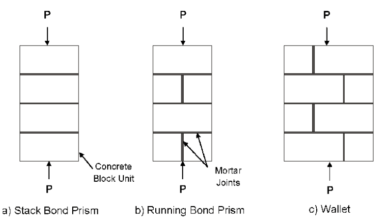Why 4K Laser Projectors Are the Future of Home Cinema

In 2025, home entertainment is evolving rapidly, with 4K laser projector leading the charge as the pinnacle of cinematic excellence. These projectors combine ultra-high-definition resolution (3840 x 2160 pixels) with laser-based illumination to deliver unparalleled image quality, vibrant colors, and long-term reliability. As consumers demand larger screens and more immersive experiences, 4K laser projectors are emerging as the future of home cinema, outshining traditional lamp-based models and even rivaling high-end TVs. This blog explores the technological advantages of 4K laser projectors, their impact on home theater visuals, and practical tips for setting up a professional-grade cinema experience at home.
The Power of 4K Resolution and Laser Illumination
At the core of 4K laser projectors is their ability to deliver four times the detail of 1080p, rendering every texture, shadow, and hue with stunning clarity. Whether achieved through native 4K chips or pixel-shifting technology, the resolution ensures crisp visuals on screens up to 150 inches or larger, making them ideal for immersive movie nights or detailed gaming. Unlike traditional lamp projectors, which filter white light and lose efficiency, laser projectors use solid-state laser diodes (often triple-laser RGB or laser-phosphor hybrids) to produce light. This results in a wider color gamut—often covering 95%+ of the DCI-P3 standard or even Rec. 2020—delivering lifelike reds, greens, and blues that make scenes pop.
Laser technology also boosts contrast, with dynamic ratios reaching up to 1,000,000:1 in premium models. This means deeper blacks and brighter highlights, critical for HDR content like Dolby Vision or HDR10+. Unlike lamps, which fade by 25% within 500 hours, lasers maintain consistent brightness for 20,000-30,000 hours—roughly 10 years of daily 8-hour use. This longevity eliminates costly bulb replacements and ensures steady performance, making 4K laser projectors a cost-effective, future-proof investment for cinephiles.
Advantages Over Traditional Projectors
Compared to lamp-based or even LED projectors, 4K laser models offer several standout benefits. Their high brightness (2,000-5,000+ lumens) allows for flexible use in semi-lit or controlled lighting environments, though they shine brightest in dark rooms where their contrast excels. Advanced features like dynamic tone mapping and scene-adaptive gamma optimize HDR performance, ensuring that bright explosions and shadowy scenes are rendered with precision. For gamers, support for 4K/120Hz via HDMI 2.1 and input lag as low as 4ms make these projectors competitive with gaming monitors, delivering smooth, responsive visuals on a massive scale.
Laser projectors are also eco-friendly, consuming up to 40% less power than lamp-based models and avoiding mercury found in traditional bulbs. Their instant-on capability (under 5 seconds) eliminates warm-up delays, enhancing user convenience. Additionally, technologies like AI upscaling enhance lower-resolution content, making older movies or streaming services look sharper, which is a boon for mixed media libraries. These advancements position 4K laser projectors as a versatile, high-performance choice for modern home entertainment.
Setting Up a 4K Laser Home Theater
To unlock the full potential of a 4K laser projector, careful setup is key. Here are practical tips for creating ultra short throw projector professional-grade home cinema:
Choose the Right Screen: Opt for a high-gain or ambient light rejecting (ALR) screen to enhance brightness and contrast, especially in rooms with some light. A 100-120-inch screen is ideal for most home theaters; ensure it’s flat and taut to avoid distortion. For budget setups, a smooth, white wall can suffice but may reduce contrast.
Optimize Room Lighting: Dark rooms maximize black levels and HDR impact. Use blackout curtains or dimmable lighting to control ambient light. If daytime viewing is needed, select a projector with 3,000+ lumens and pair it with an ALR screen to combat washout.
Positioning and Calibration: Depending on the throw type (standard or short), place the projector 3-10 feet from the screen, using lens shift or zoom for flexibility. Ceiling or wall mounts may be required for standard-throw models. Use built-in calibration tools or professional software to adjust color balance, gamma, and white point for accurate visuals.
Audio Integration: While some 4K laser projectors include basic speakers, their audio is often secondary to image quality. Connect a surround sound system or soundbar via HDMI ARC for immersive audio, supporting formats like Dolby Atmos. Place speakers to complement the screen’s scale without cluttering the room.
Content and Connectivity: Ensure your projector has HDMI 2.1 ports for 4K/120Hz content, critical for gaming or high-frame-rate movies. Stream via external devices (e.g., Roku, Apple TV) or built-in smart platforms, if available. A stable Wi-Fi connection supports seamless 4K streaming from services like Netflix or YouTube.
Maintenance and Placement: Laser projectors require minimal upkeep, but ensure proper ventilation to manage fan noise, which can be noticeable in quiet scenes. Place the projector on a stable surface or mount, and clean the lens periodically to maintain clarity.
Challenges and Considerations
While 4K laser projectors excel, they come with considerations. Prices range from $1,000 to $15,000, making high-end models a significant investment. Standard-throw models require more setup effort, including precise alignment and potential mounting, compared to ultra short throw alternatives. In bright rooms without ALR screens, their performance may lag behind TVs, so lighting control is critical. Additionally, while laser longevity reduces maintenance, the upfront cost can be a barrier compared to budget lamp or LED projectors, which start at $300 but lack comparable resolution or durability.
The Future of Home Cinema
In 2025, 4K laser projectors are setting a new standard for home cinema, blending cutting-edge resolution, color accuracy, and sustainability. Their ability to deliver theater-quality visuals on massive screens makes them a compelling alternative to TVs, especially for dedicated home theater rooms or enthusiasts craving cinematic immersion. As prices continue to drop and features like AI upscaling and high-refresh-rate gaming become standard, 4K laser projectors are poised to dominate the home entertainment landscape. For anyone looking to build a future-proof, high-impact cinema experience, these projectors offer a window into the next generation of visual storytelling.





